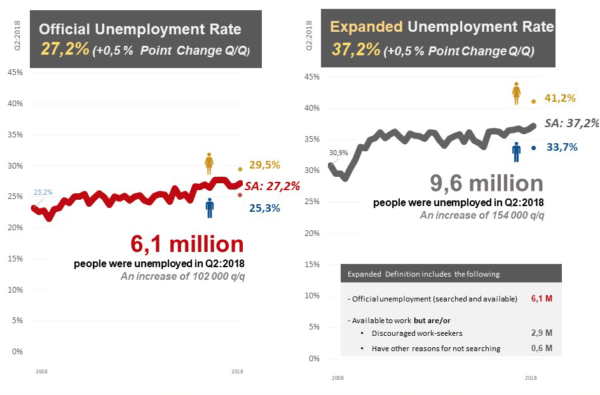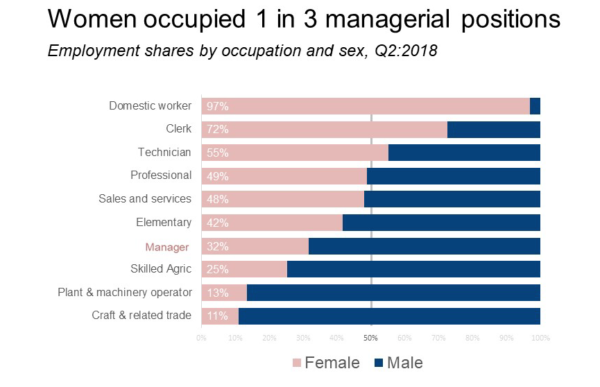Decades and decades of struggle have been dedicated to the equal rights of women, and even now in the modern age, the South African labour market is more favorable to men than it is to women.
The official unemployment rate has been relatively high since 2008 and in the last decade, the rate has increased from 23,2% in the first quarter of 2008 to 27,2% in the second quarter of 2018.
A Quarterly Labour Force Survey by Statistics South Africa displayed some interesting statistics about women in the labour force.
The expanding unemployment rate, which does not take the job search into account, was even higher and increased from 30,9% to 37,2% in 2018. Throughout this period from 2008 to 2018, both of the increase rates mentioned have been higher among women than men.
Women’s unemployment rates were 29,5% in the second quarter of 2018 compared to the 25,3% among men, making the rate of unemployment for women 7,5% higher than that of males.

As we celebrate Women’s Month, it is important to celebrate what women have achieved since 9 August 1956, when more than 20 000 women marched to the Union Building in protest against the unjust laws imposed on women in South Africa. Even though women are far better off today than before, it goes without saying that they work everyday to further their careers and standing in the industry.
South Africa has made great strides, but gender representative is still below the 50% mark for positions that come with ideal influence.
Between 2001 and 2014 women made up 32% of Supreme Court of Appeal judges, 31% of advocates, 30% of ambassadors and 24% of heads of state-owned enterprises.
The paradigm of women in the workplace and industry is slowly but surely shifting as more and more women are earning their place.

Women formed 43,8% of the total employment rate in the second quarter of 2018. Only 32% of which were in managerial positions. Women dominate the domestic worker, clerk or technician occupations, with men dominating the rest. Only 3% of domestic worker jobs being occupied by men while 10,9% of craft and related trade jobs were occupied by women.
The informal sector accounting for 17,4% of total employment, play an important role in providing employment to those who can’t find work. Informal sector employment is mainly concentrated in Trade. There are more women than men employed in the informal sector Trade (47,6% of women compared to 30,6% of men).
Women are more likely than men to be involved in unpaid work. In the second quarter of 2018, about 55,2% of those involved in non-market activities were women. This proportion decreased by 7,5% from 62,7% in the first quarter of 2008 on account of an increase in the number of men involved in non-market activities in the second quarter of 2018.
The struggle for an equal employment rate still continues for women, but one thing that cannot be denied are the strides made and the victories won along the way.
Picture: Pixabay






